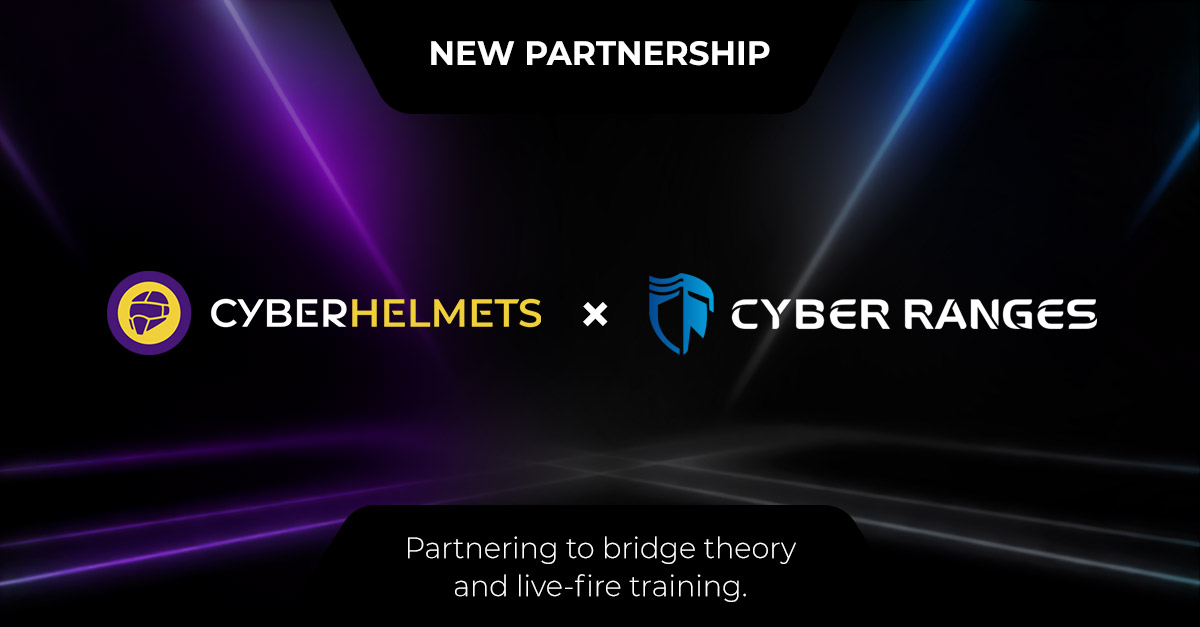At Cyber Helmets, our mission is to bridge the gap between theory and real-world readiness. That’s why we’re excited to announce our strategic partnership with CYBER RANGES, a global leader in cyber range infrastructure and adversary simulation.
This collaboration empowers us to deliver deep-dive, engaging, custom instructor-led training experiences that are aligned with real-world threat scenarios, whether you’re a Blue Teamer, Red teamer or running Purple Team exercises across your organization.
Why CYBER RANGES?
CYBER RANGES provides the scalable infrastructure and orchestration capabilities needed to:
- Deploy complex, real-world environments tailored to penetration testing, Red Teaming, and Blue teaming objectives.
- Customize live-fire cyber exercises that evolve in real time based on learner actions, enabling true hands-on coaching.
- Run concurrent instructor-led sessions with full isolation and resource segmentation perfect for enterprise-scale simulations or multi-team engagements.
- Deliver end-to-end Purple Team training paths, mapped to MITRE ATT&CK and designed for progressive skill development from recon to post-exploitation.
What this means for our trainings
With CYBER RANGES we are increasing our capabilities of orchestrating pre-built or custom-built cyber range scenarios that go beyond theory:
- Red Team & Purple Team scenarios embedded in realistic enterprise environments.
- Dynamic simulation control, allowing instructors to adapt environments to student decisions and actions.
- Seamless alignment with Cyber Helmets’ methodology, ensuring exercises remain tightly focused on real-world Red Team, Purple Team and Blue Team workflows.
- Deep technical debriefs and collaborative analysis post-exercise.
From our leadership
Aris Zikopoulos, Managing Director at Cyber Helmets, said:
“To prepare professionals for the complexity of modern cyber warfare, training must reflect real-world scenarios. Our partnership with CYBER RANGES allows us to deliver adversary-driven scenarios that evolve in real time just like actual attacks do. It’s not just about practicing techniques; it’s about building instincts, decision-making under pressure, and the kind of muscle memory that matters when systems are on the line.”
Al Graziano, CEO for CYBER RANGES, added:
“We are honoured to announce that Cyber Helmets has joined our arsenal of value-added partners engaged in accelerating the cyber capability and preparedness of our end-Customers, especially those in essential industries. CYBER RANGES delivers a unique next-generation cyber-OT simulation-based environment for developing the global elites of security professionals and their leaders.”
Whether you’re preparing for a targeted engagement, strengthening team coordination, or simply raising the bar on hands-on learning, CYBER RANGES helps us scale that experience with precision and speed.
Interested in adding CYBER RANGES to your training stack?
Contact us to book a briefing or request a live demo.












